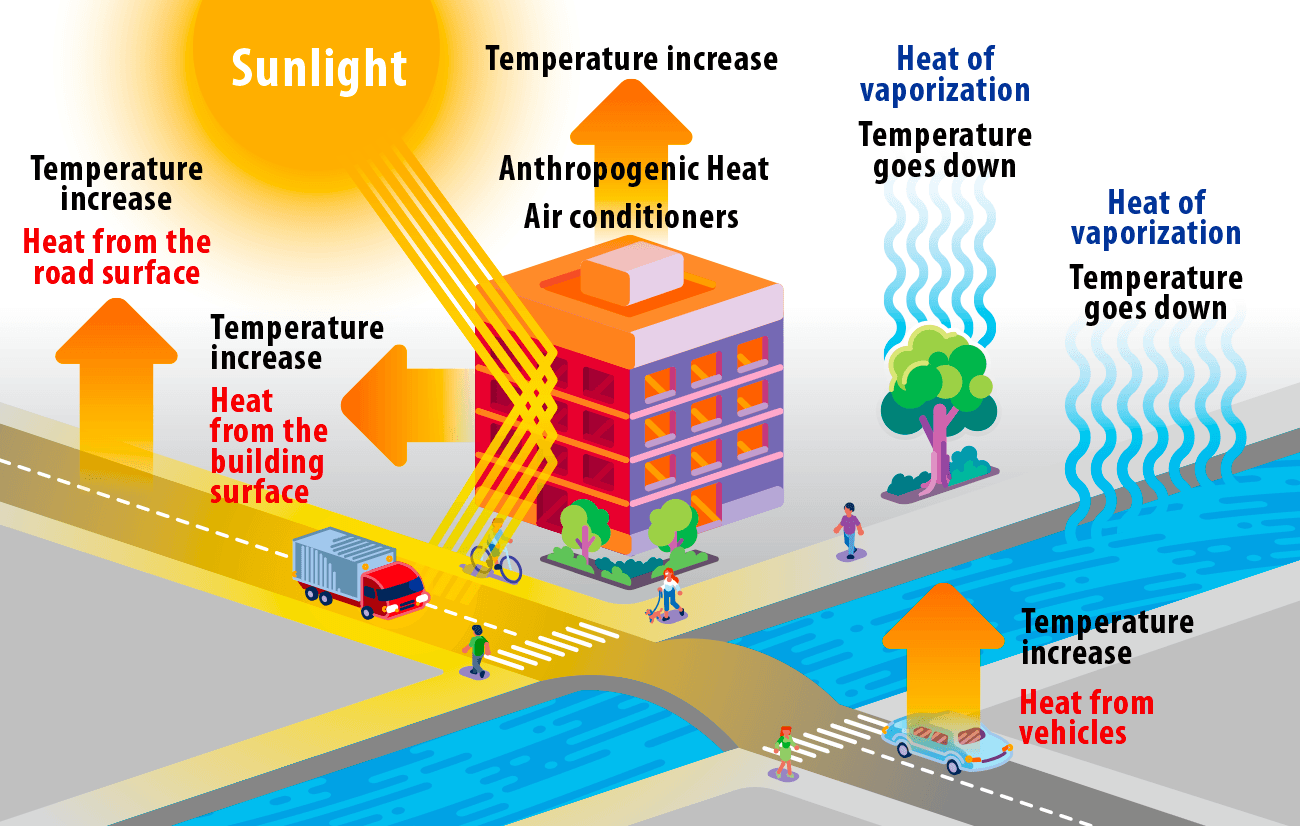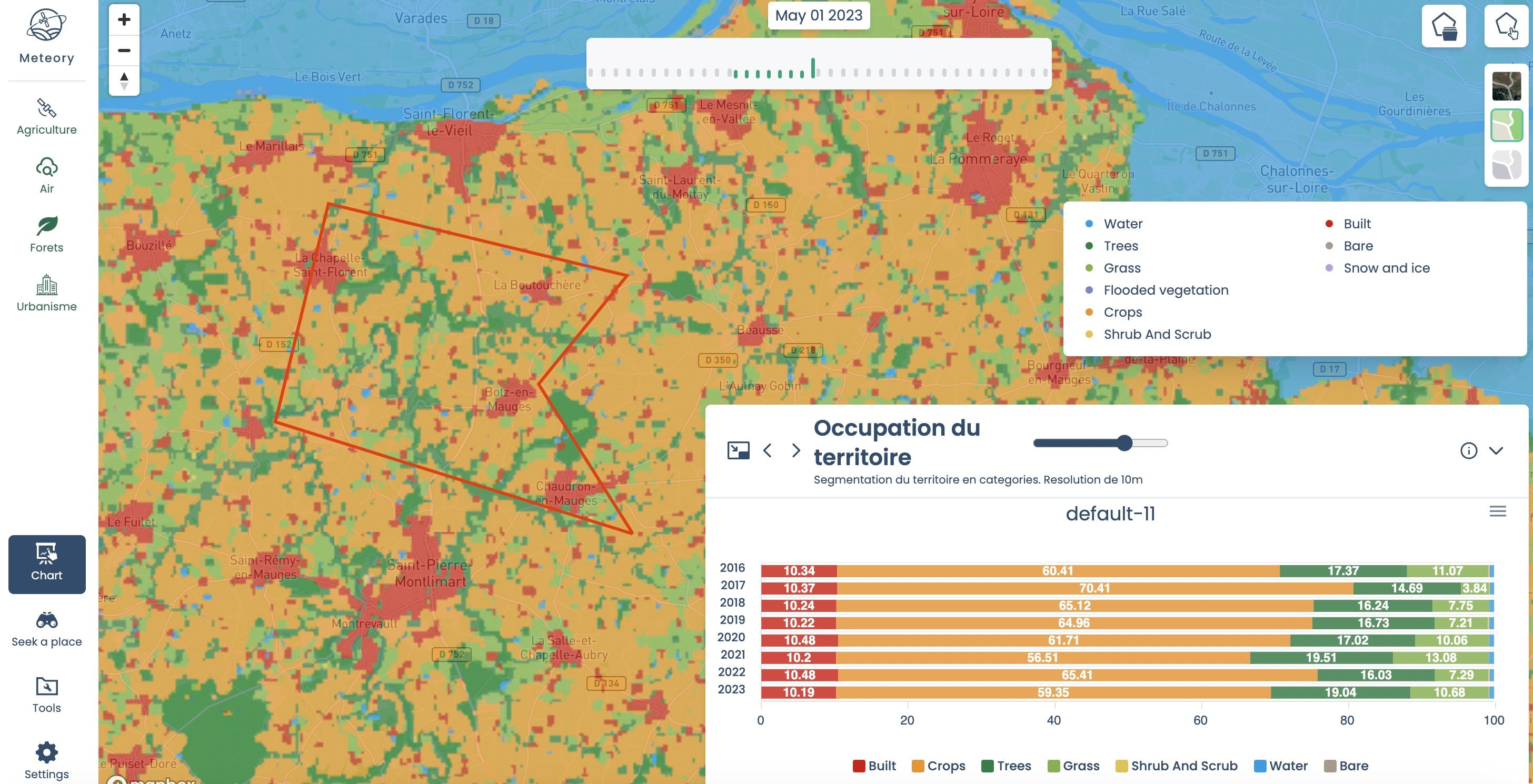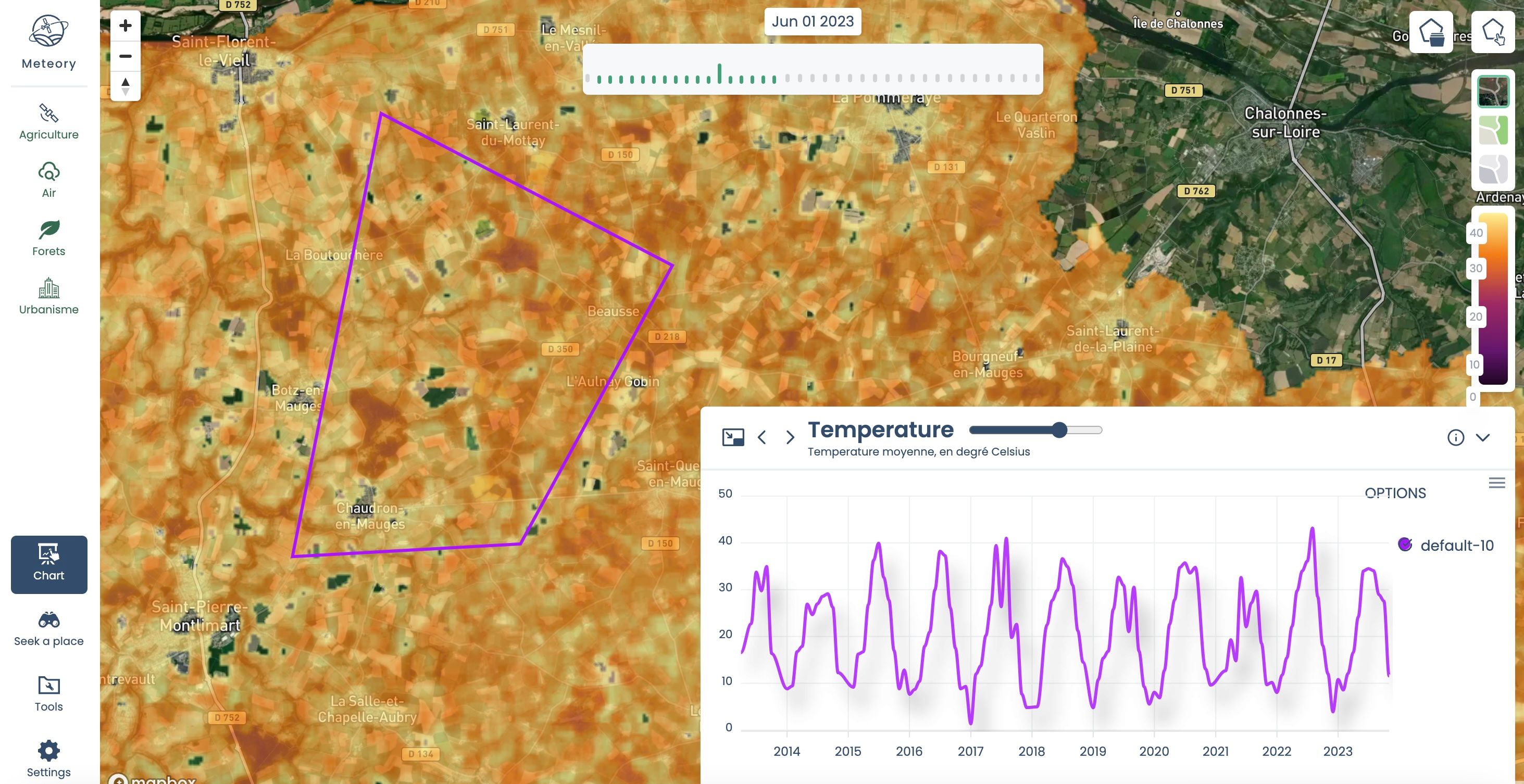Urban Heat- A Comprehensive Guide to Monitoring and Mitigating Temperature Trends in Cities
Blog > Article > Urban Heat- A Comprehensive Guide to Monitoring and Mitigating Temperature Trends in Cities

As our global climate undergoes unprecedented changes, the consequences of urban heat become increasingly pronounced, affecting the health and well-being of urban residents.
Urban heat, a burgeoning challenge for cities worldwide, is a phenomenon characterised by elevated temperatures in densely populated urban areas compared to their surrounding regions. The management of urban heat presents a growing challenge for municipalities, especially with the implementation of new policies controlling the levels of soil artificialization (ZAN). Meteory platform is a useful tool to help in monitoring the urban heat levels locally to prevent further negative consequences of this phenomenon.
How is urban heat posing a threat?
The primary contributors to urban heat are multifaceted. One major factor is the prevalence of impervious surfaces, such as asphalt and concrete, which absorb and retain heat. The built environment, characterized by tall buildings closely spaced together, exacerbates this effect by reducing air circulation and promoting heat retention. The lack of green spaces, trees, and vegetation further compounds the issue, as these elements play a crucial role in naturally cooling the environment through shade and transpiration.
 Urban heat creation diagram
Urban heat creation diagram
Urban heat is not merely an inconvenience; it poses a direct threat to public health. Prolonged exposure to elevated temperatures can lead to heat-related illnesses, including heat exhaustion and heatstroke. Vulnerable populations, such as the elderly, children, and individuals with pre-existing health conditions, are particularly at risk. Additionally, Urban heat is particularly concerning in France, where dense urban areas and impermeable surfaces contribute to heat islands. The urban heat island effect exacerbates air quality issues, as higher temperatures contribute to the formation of ground-level ozone and other pollutants. The impact on public health, especially during summer heatwaves, requires a proactive approach to mitigate risks and make cities more resilient.
Addressing the urban heat with Meteory
ZAN, a key policy in the fight against excessive soil artificialisation in France, aims to regulate urban expansion and promote a more sustainable use of land. It offers a unique opportunity to align urban heat management goals with territorial sustainability imperatives. Municipalities can use this new nomenclature to steer urban development projects towards greener solutions, integrating green spaces and resilient urban designs. Effective urban heat management must be integrated into urban policies to ensure sustainability and the well-being of citizens. However, this is usually easier said than done and this is where Meteory can be of help. Addressing urban heat requires a holistic approach that considers both the built and natural environments. Introducing green spaces, parks, and urban forestry can help mitigate the heat island effect by providing shade, promoting evapotranspiration, and fostering a more balanced microclimate.
 Land use monitoring using Meteory platform
Land use monitoring using Meteory platform
However, in the face of escalating temperatures and the associated health risks, there is a growing imperative for municipalities to prioritise urban heat management and monitoring as an integral component of their climate resilience strategies. Meteory employs satellite imagery, specifically utilising infrared bands, to monitor and analyse urban heat patterns. This technology allows decision-makers to identify areas with the most critical heat issues, monitor temperatures in real time and keep an eye on territory’s urban occupation. By understanding the dynamics of urban heat, municipalities can take proactive measures to safeguard their communities.
Satellite data not only provides real-time insights into current urban heat conditions but also enables the simulation of future scenarios. Meteory's platform allows decision-makers to anticipate where urban heat is likely to become more severe. This predictive capability is invaluable for planning sustainable urban development and mitigating the adverse effects of rising temperatures. Data insights provided within Meteory’s platform enable municipalities to implement adaptive measures, such as increased greenery, reflective surfaces, and sustainable urban design. These interventions not only address current urban heat challenges but also contribute to long-term climate resilience.
 Temperature monitoring using the Meteory platform
Temperature monitoring using the Meteory platform
The advanced data gathered through satellite technology provided by Meteory offers a transformative approach to addressing urban heat challenges. By leveraging real-time data and predictive analytics, municipalities can make informed decisions, fostering urban environments that are not only resilient to climate change but also provide a high quality of life for their residents. The integration of such innovative solutions is crucial in the global effort to build sustainable, climate-resilient cities.

Aleksandra Jaworska • May 23, 2024